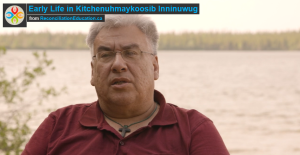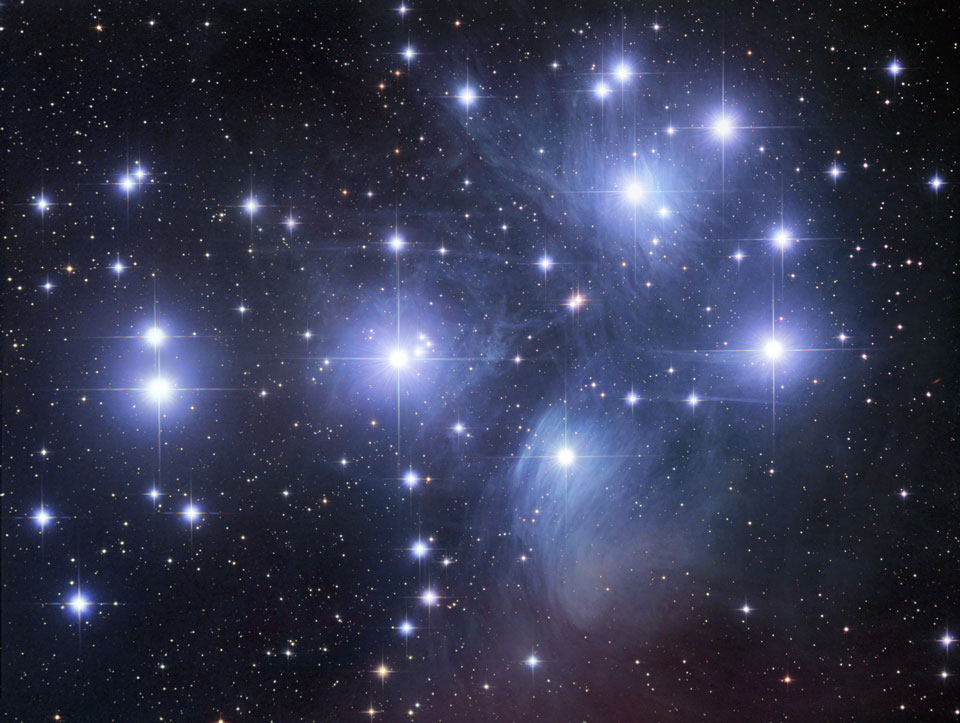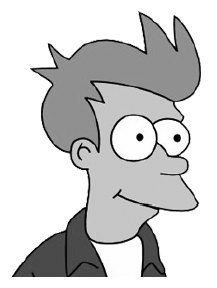As I start my new job at Red River College Polytechnical, I’ve been learning a lot about Indigenization, colonialism, and reconciliation and what they mean for teaching. I haven’t had to dig this deeply into Indigenization before and I’m learning a lot.
I’m always looking for patterns. Maybe that’s my math background. As I was reading about Indigenization, I saw an interesting connection between Indigenous ways of learning and the Western ideas of transmission vs constructivist models of teaching.
I like to think that recognizing this connection is an example of “two-eyed seeing” that Mi’kmaq Elder Albert Marshall describes like this:
learn to see from your one eye with the best or the strengths in the Indigenous knowledges and ways of knowing… and learn to see from your other eye with the best or the strengths in the mainstream (Western or Eurocentric) knowledges and ways of knowing… but most importantly, learn to see with both these eyes together, for the benefit of all
— Mi’kmaq Elder Albert Marshall
Two-Eyed Seeing (pdf) from the Institute of Integrative Science and Health
The Two-Eyed Seeing article goes on to say,
Two-Eyed Seeing adamantly, respectfully, and passionately asks that we bring together our different ways of knowing to motivate people, Indigenous and non-indigenous alike, to use all our understandings so we can leave the world a better place and not compromise the opportunities for our youth (in the sense of Seven Generations) through our own inaction.
Here’s the connection that’s becoming clearer for me as I compare my new Indigenous seeing with my much longer experiences with Western models of learning.
Most teaching in #HigherEd follows the transmission model: an expert stands at the front of the classroom and talks (and talks and talks and talks.) They fill the students heads with knowledge (the “students-as-empty-vessels” mindset.) While I fully advocate for short mini-lectures where instructors can model expert-like habits of thinking or share their unique experiences, we know teaching strategies based on the constructivist model of learning are more effective. That’s where the course instructor provides content, structure, and active learning opportunities for each student to construct their own knowledge, integrating new concepts and skills into their existing knowledge. We know this approach is even more effective when students work with others, helping each other build their understanding. That’s the social constructivist model.
Now consider the Indigenous approach to teaching and learning. Here’s Red River College Polytechnical Elder-in-Residence Paul Guimond, Little Eagle Bone, teaching his class. Everyone sits in a circle with no “front” for the expert. He asks questions and invites students to engage and contribute to their own understanding and the understanding of their peers. That sounds just like the constructivist model!

Next, here’s Chief Donny Morris of the Kitchenuhmaykoosib Inninuwug First Nation describing Indigenous children:
From when you can walk, you’re taught certain little things like how to fish for little minnows or birds, to hunt them. You’re already at that stage when you’re on our own to learn those things. So when you’re a teenager or an adult, automatically that thing is already instilled in you, to hunt, to fish, to gather.

To me and my novice understanding, that sounds like Indigenous ways of learning are continually leading students into Vigotsky’s “zone of proximal development”, that area of learning a student cannot complete alone but can accomplish when they have the guidance and support of a teacher or peer with a higher skill set [Wikipedia].
I’ll be honest…
I’ll be honest: before working my way through “4 Seasons of Reconciliation” and “Pulling Together: A Guide for Curriculum Developers“, I was worried that I’d have to, like, choose between Western and Indigenous models of learning, and that respecting and advocating for Indigenization of the curriculum would mean tossing aside everything I know about how people learn. I see now that that mindset — that there has to be a winner — is a colonial way of thinking. So I’m happy and relieved that the right thing to do is follow the best practices of both approaches, especially when they have so much in common.
It’s still new to me, though, and I know my understanding will continue to grow and evolve (I hope I don’t read this post in 5 years and cringe ?). I keep learning.

 When a meteorite hits the surface of a planet or moon, it creates an impact crater. This picture of our Moon’s Mare Nubium and surrounding hills shows some of the Moon’s surface is quite smooth while other regions are covered in craters.
By measuring the sizes and number of craters, astronomers can learn about the objects (called the “impactors”) that struck the surface and also about the ages of various regions on the planet’s surface.
When a meteorite hits the surface of a planet or moon, it creates an impact crater. This picture of our Moon’s Mare Nubium and surrounding hills shows some of the Moon’s surface is quite smooth while other regions are covered in craters.
By measuring the sizes and number of craters, astronomers can learn about the objects (called the “impactors”) that struck the surface and also about the ages of various regions on the planet’s surface.
 An orrery is a mechanical model of the Solar System. When you turn a crank, the planets and moons orbit the Sun at correctly-scaled distances with correctly-scaled periods. In this tutorial, you and your classmates build a scale model of the Solar System by marking the locations of the visible planets, Mercury, Venus, Earth, Mars, Jupiter and Saturn, at regular intervals of time. Later, when you and your classmates step from location to location, you’ll reproduce the motion of the planets – a human orrery!
An orrery is a mechanical model of the Solar System. When you turn a crank, the planets and moons orbit the Sun at correctly-scaled distances with correctly-scaled periods. In this tutorial, you and your classmates build a scale model of the Solar System by marking the locations of the visible planets, Mercury, Venus, Earth, Mars, Jupiter and Saturn, at regular intervals of time. Later, when you and your classmates step from location to location, you’ll reproduce the motion of the planets – a human orrery!
 Every month, the Moon appears to change shape in the sky as it goes through phases from new Moon to full Moon and then back to new. Ancient civilizations used the phases of the Moon to track the passage of time. Today's Gregorian calendar no longer depends on the phases of the Moon but the Islamic, Hebrew and Chinese cultures still base festivals and holy days on the cycles of the Moon.
Every month, the Moon appears to change shape in the sky as it goes through phases from new Moon to full Moon and then back to new. Ancient civilizations used the phases of the Moon to track the passage of time. Today's Gregorian calendar no longer depends on the phases of the Moon but the Islamic, Hebrew and Chinese cultures still base festivals and holy days on the cycles of the Moon.
 The Sun, stars and planets cross our sky in complicated patterns that depend on the Earth’s daily rotation around its tilted axis and its annual revolution of the Earth around the Sun. For thousands of years, astronomers have watched the sky, figured out the patterns and built “computers” so they could predict when and where the Sun, stars and planets rise and set each day. In this tutorial, you’ll use your 21st Century computer to explore the motion of the Sun.
The Sun, stars and planets cross our sky in complicated patterns that depend on the Earth’s daily rotation around its tilted axis and its annual revolution of the Earth around the Sun. For thousands of years, astronomers have watched the sky, figured out the patterns and built “computers” so they could predict when and where the Sun, stars and planets rise and set each day. In this tutorial, you’ll use your 21st Century computer to explore the motion of the Sun.



 In this activity, students investigate the quantities that determine the strength of the force of gravity between two objects, identifying what matters and how that quantity changes the force. So they can recognize and appreciate the inverse-square law of gravity, the students first play with an analogy: the amount of pain the cartoon character Fry feels when he looks are different sized light bulbs, from near and far and with open or squinting eyes. They do this through an “invention activity” (Schwartz and Martin, 2004) which are proven to increase students’ understanding of the new concept (gravity) and their ability to transfer that knowledge to other situations.
In this activity, students investigate the quantities that determine the strength of the force of gravity between two objects, identifying what matters and how that quantity changes the force. So they can recognize and appreciate the inverse-square law of gravity, the students first play with an analogy: the amount of pain the cartoon character Fry feels when he looks are different sized light bulbs, from near and far and with open or squinting eyes. They do this through an “invention activity” (Schwartz and Martin, 2004) which are proven to increase students’ understanding of the new concept (gravity) and their ability to transfer that knowledge to other situations.
 Look at the desk and look around the room. Seems pretty flat, doesn’t it? But the Earth isn’t flat, so why is the room? What about the Universe? Is it flat? Does it have positive curvature? Negative? How can we tell?
In this activity, you’ll do experiments that explore the effects of curvature. The key to determining the shape is the number of degrees in a triangle.
Look at the desk and look around the room. Seems pretty flat, doesn’t it? But the Earth isn’t flat, so why is the room? What about the Universe? Is it flat? Does it have positive curvature? Negative? How can we tell?
In this activity, you’ll do experiments that explore the effects of curvature. The key to determining the shape is the number of degrees in a triangle.
 White dwarfs and neutron stars are two bizarre forms of stellar corpses left behind after the star collapses. For a very massive star, though, nothing can stop its end-of-life collapse. The star becomes a black hole, one of the strangest and most extreme objects in the Universe. How extreme? Spacetime is so curved (or as Newton would say, “gravity is so strong”) not even light can escape once it falls into a black hole. What would happen to a star or a planet that gets too close to the black hole? In this tutorial, you’ll figure that out by watching a poor astronaut fall into the black hole of death!
White dwarfs and neutron stars are two bizarre forms of stellar corpses left behind after the star collapses. For a very massive star, though, nothing can stop its end-of-life collapse. The star becomes a black hole, one of the strangest and most extreme objects in the Universe. How extreme? Spacetime is so curved (or as Newton would say, “gravity is so strong”) not even light can escape once it falls into a black hole. What would happen to a star or a planet that gets too close to the black hole? In this tutorial, you’ll figure that out by watching a poor astronaut fall into the black hole of death!
 The colour of a glowing gas, like a candle flame, the burner on a gas stove, or a star reveals its temperature: hotter gases glow blue, colder gases glow red. On more careful inspection, though, the light we receive from each gas contains an enormous amount of information: not just its temperature but also its chemical composition, motion and more. This information is found by decoding the spectrum of the gas.
In this tutorial, you’ll learn how to “crack the code” and reveal what the glowing objects are made of.
The colour of a glowing gas, like a candle flame, the burner on a gas stove, or a star reveals its temperature: hotter gases glow blue, colder gases glow red. On more careful inspection, though, the light we receive from each gas contains an enormous amount of information: not just its temperature but also its chemical composition, motion and more. This information is found by decoding the spectrum of the gas.
In this tutorial, you’ll learn how to “crack the code” and reveal what the glowing objects are made of.
 Stars come in all colours and sizes, masses and brightnesses, ages, and distances. How can we possibly learn how stars work when each one appears to be unique? What we need are some relationships between the characteristics of stars. We already know that the colour of a star is directly related to the temperature of the star: red stars are cool, blue stars are hot. That means we don’t have to measure both colour and temperature – we get one from the other. Are there any other relationships? What does a “relationship” look like, anyway? And what does a relationship tell us about how stars work?
In this tutorial, you’ll see what it means for characteristics to be related (or not related) and then see how to use the relationships.
Stars come in all colours and sizes, masses and brightnesses, ages, and distances. How can we possibly learn how stars work when each one appears to be unique? What we need are some relationships between the characteristics of stars. We already know that the colour of a star is directly related to the temperature of the star: red stars are cool, blue stars are hot. That means we don’t have to measure both colour and temperature – we get one from the other. Are there any other relationships? What does a “relationship” look like, anyway? And what does a relationship tell us about how stars work?
In this tutorial, you’ll see what it means for characteristics to be related (or not related) and then see how to use the relationships.
